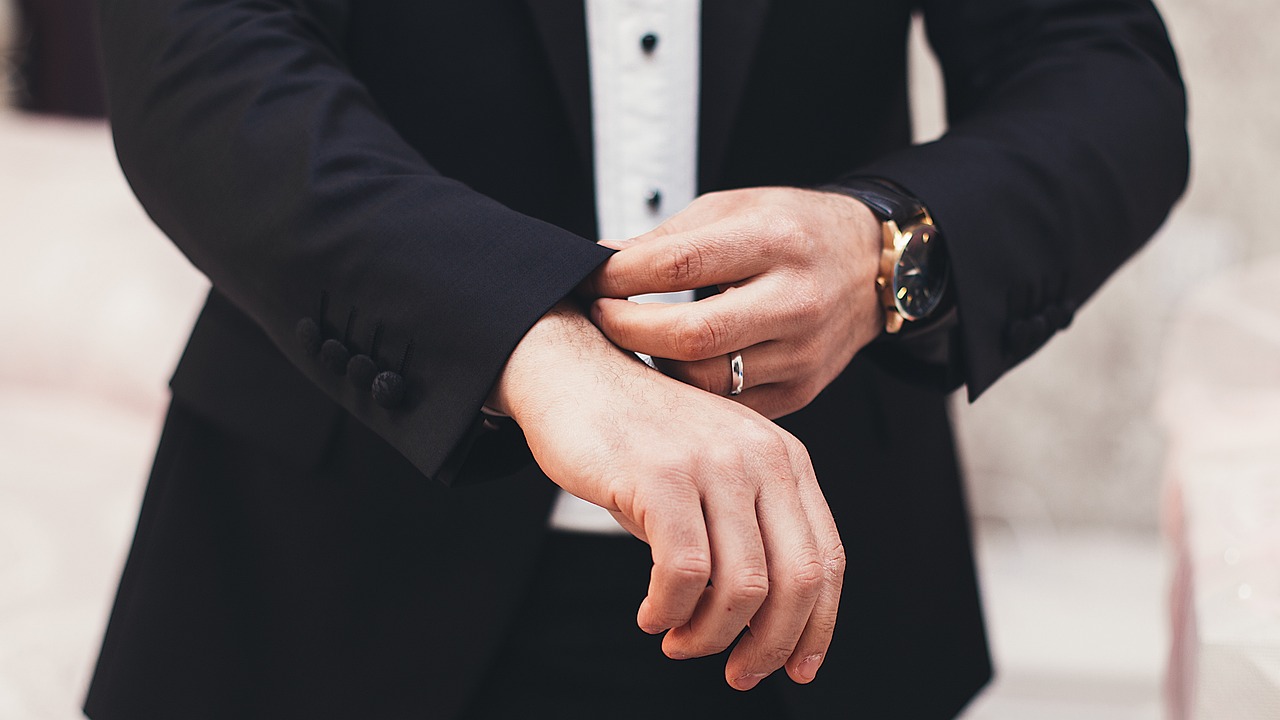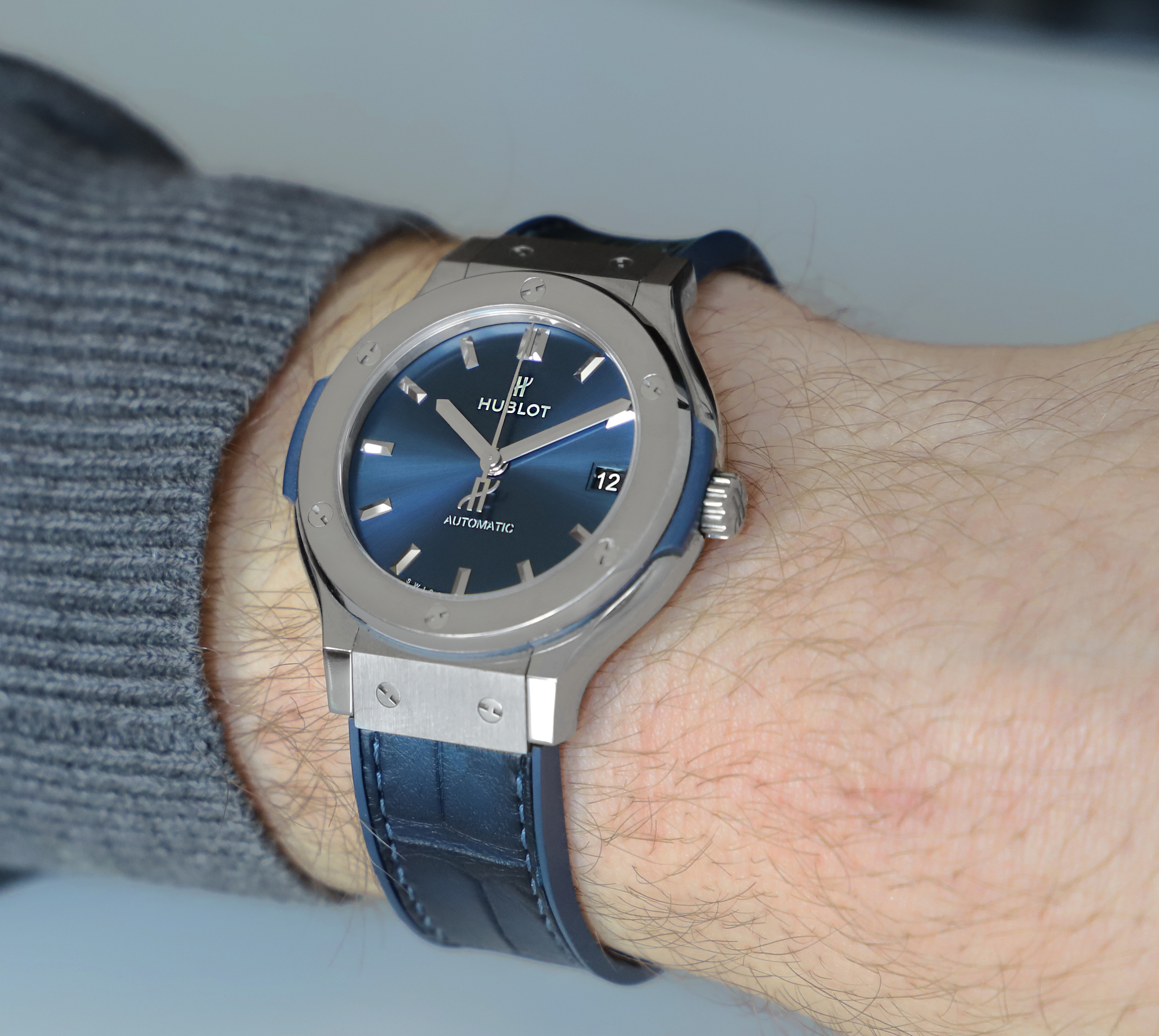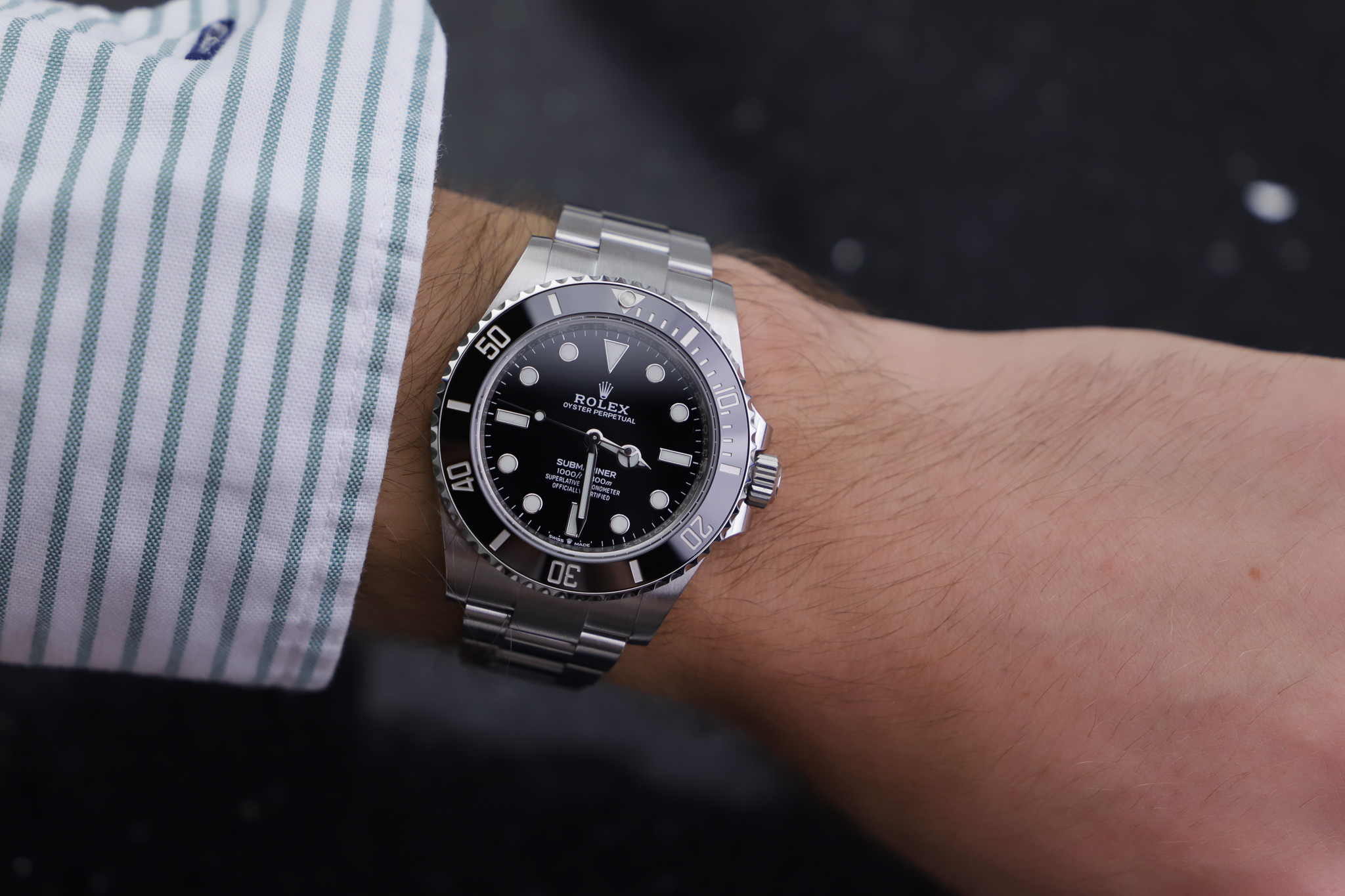
What type of Watch to Wear with a Suit? Complete Guide
Watches come in all kinds of different shapes and forms. Different watches are intended for different purposes and to look your very best, it’s important to understand which watches are best suitable for different kinds of occasions. But with so many watches to choose from, it can feel overwhelming to know what to wear and when to wear them.
If you’re wearing a suit, you may be asking yourself these exact questions. ”What type of watch should I wear with a suit?”
Fortunately, that’s exactly what we’re going to sort out in this article, discussing all the ins and outs and what you should think about when choosing a watch to pair with your suit.
What watch to wear with a suit
First off, there are only general rules when it comes to fashion and style. Whilst there are ”rules” for wearing a suit and pairing it with shoes or pocket squares, for example, these are always mostly general guidelines and fashion tips according to tried and true concepts. But at the end of the day, you’re free to do exactly how you want and wear what you feel most comfortable with.
But if you want to follow some tried and true fashion rules that are sure to enhance your style and look, continue reading. If you want, you can use them as inspiration and make your own tweaks when choosing and wearing your watch.
Here are the most important things to consider when wearing a watch with a suit.
Think about the occasion
The first thing you should consider when deciding on a watch to wear with a suit is the occasion. Naturally, wearing a suit involves formal occasions, but there are different levels of formality and different types of formal occasions.
A general rule is that the more formal the event is, the more elegant and less sporty you want the timepiece to be. In many cases, this also means the more formal occasion, the more minimalistic you want the timepiece to be.
On a casual occasion, you can wear a bold and sporty watch as it aligns with the situation. But on formal events, you need to look for a more elegant, refined, and sleek timepiece that is not ”in your face” and that stands out on your outfit like a sore thumb.
On black tie events where you find yourself wearing a tuxedo, minimalism is the key when choosing your watch. Most people will wear a slim, discreet, and minimalistic timepiece that elegantly and gracefully complements your look without stealing the show.
For less casual suit events, for example during a business meeting, things are not quite as strict and you have more room to play and experiment with different timepieces, although, you should still use the tips we discuss in this article as a starting point.

Consider the size of the watch
When choosing the watch to pair with a suit, the size is something that should not be neglected.
If you consider what we discussed above about the more formal occasion, the more refined, sleek, and discreet watch you need, you’ll understand how it can be applied here as well.
A dress watch for a suit should not be bulky and huge. This is why most dress watches tend to be smaller in size. After all, their purpose is not to steal the show but to complement your look.
Most dress watches for men measure between 36 and 40mm in diameter and this is what we would advise you to follow when picking a watch for your suit. A the same time, the diameter of the watch is not the only thing that matters. Lug-to-lug measurement and thickness are two other important factors that affect the overall look of the watch on your wrist.
The thickness of the watch is particularly important when wearing a suit because the goal of a dress watch is that it is thin enough to slide under a cuff effortlessly. If it’s too thick and bulky, the watch will have a hard time discreetly sliding under and may instead get stuck. Therefore, try to look for a watch that is thin.

Naturally, the size of the watch to wear also depends on your wrist size. If you have a huge
An additional reason why smaller is generally better for formal occasions is that these occasions and events tend to be quite traditional. You wear traditional clothing in a traditional way, following established dress code rules that have changed very minimally over the course of the decades. As such, it only makes sense to follow the tradition when it comes to the choice of watch as well. And if you look back in the day, men wore considerably smaller watches than today.
If you want to be very traditional, 36mm is considered an ideal and classic size, but it also depends on the exact event, your specific taste, as well as your own taste, and your preference. Generally speaking, the larger the watch, the less formal the occasion. So if you are wearing a casual suit, a larger watch may be more appropriate, whereas the opposite can be said for traditional and formal occasions.
This also ties in with the importance of having a well-fitting suit. You want the suit to be of the perfect size and to fit you perfectly. In the same way, you want the watch to fit you perfectly and not look too big or too large (Although too large is what risks being the most sloppy).

Consider the strap
Apart from the actual watch, the strap is an important factor to consider when choosing your watch. Think about how important your shoes are for your overall look. And in a way, the strap is the shoes of your watch.
Different straps will greatly have an effect on how the watch looks on your wrist and how it matches your outfit. There are a lot of straps to choose from in various materials and colors which can make it very overwhelming so let’s sort out how you should think when it comes to suits and watch bracelets.
In short, we can say that the most common (and best) type of strap for a dress watch is leather. Leather looks elegant and sleek, and can help make your watch look more formal. The good thing about the leather strap is that you can easily change it which allows you to mix and match the strap with your belt and your shoes. By doing this type of mixing and matching with your accessories, you elevate your overall look to the next level and show that you’re a very conscious person who knows what you are doing.

The bottom line is that you should never underestimate the importance of the strap and its effect on how the watch looks on your wrist. If you’re unsure, a good tip is to look at which type of strap different watches come presented on from the factory. If you look at, for example, Patek Philippe dress watches, you’ll notice that almost all of them come fitted with either black or brown leather straps. We can assume that watch brands have put a lot of thought into deciding the strap for a certain watch, so this is a good starting point when deciding the type of strap for the occasion.
Let’s look at a few common watch straps and how you should think of them when it comes to wearing a suit:
NATO and fabric straps
In our opinion, NATO and fabric straps are almost always a no-no when wearing a suit. NATO straps in particular are very casual and more associated with sports watches. Nato straps and fabric straps are intended for sports watches and on formal occasions due to their versatility and durability – in other words, not the type of situations you expect to find yourself in when wearing a suit.
To be on the safe side, avoid NATO and fabric straps when wearing a suit as there’s a great risk it will likely make your watch look too casual.

Rubber straps
This speaks for itself, really. Avoid rubber straps when wearing a suit. Rubber straps are intended for diving and give a sporty and casual look. Not the type of look you’re trying to achieve for your watch.
Metal bracelets
Metal bracelets come in many different shapes and forms so it’s difficult to give a fixed rule here. But in general, metal bracelets are more sporty and less formal than leather straps. However, that is not to say that metal bracelets cannot be worn together with suits.
Patek Philippe, for example, makes highly luxurious and elegant metal bracelets in gold for some of its dress watches. But stainless steel metal bracelets can also work. Polished bracelets will naturally be more formal than brushed ones.
Whether or not a metal bracelet is appropriate for your suit depends on the formality of the occasion and the type of bracelet. For the most formal black-tie event, it’s perhaps not ideal. But for a business meeting, a watch with a steel bracelet will definitely work well.
Leather straps
As already discussed, leather straps are the safest bet for your watch when wearing a suit. It’s also the most formal option. Leather is the most common choice that you will find on dress watches because they align best with a formal look and remain stylish yet discreet. Black or brown leather straps are best to not steal the show from either the watch or your outfit. But as mentioned earlier, you can switch straps so that it matches your belt and shoes for a complete look.
Shiny black leather is the most formal leather strap which is usually the best option for occasions that are very formal – in particular black tie events.
Case metal
Today, watches are made in a wide array of different metals. But the most common are yellow gold, white gold, rose gold, and stainless steel. In addition to this, there are also other, more modern, and innovative metals like ceramic or bronze.
We would advise that you stick to the traditional metals when choosing a watch to wear with a suit, meaning gold or steel. Naturally, gold is much more exclusive and luxurious than steel, so if you can afford it, definitely go for it. White gold, for example, looks similar to stainless steel but has much more luster to it and also comes with more weight.
Otherwise, you can’t go wrong with stainless steel.
To achieve an elegant look, the watch should ideally predominantly be polished and not brushed. Brushed makes the watch lean more towards sportiness, which is not what you’re trying to achieve when wearing a suit.
Of course, yellow gold and rose gold will be much more flashy and vibrant than both steel and white gold, but they will certainly enhance the luxuriousness and elegance of your look and outfit.
Yellow gold or rose gold is the best option for when you want to elevate your look.
But wearing gold is not always the perfect choice, for example when you don’t want to be flashy during a business meeting. You’ll simply have to think about the occasion and consider whether gold would be a good idea or not. But either way, both gold, and steel work really well together with a suit.
Yellow gold has long been the go-to material for dress watches so if you want a classic and timeless look, this is a great material.
Whilst we are talking about metals, similar to matching the strap with your shoes and belt, you also want to match the metal of your watch with the rest of your outfit. This may include rings, bracelets, and cufflinks. This will give uniformity to your outfit.

Sports watch with suits? Sometimes
A trend that has gotten more and more common is to wear a sports watch, in particular a dive watch, together with a suit. James Bond originally sparked this trend by wearing a Rolex Submariner and the trend has only grown since.
Whilst wearing a dive watch with a suit may seem impossible on paper (a sport dive watch for a formal outfit), it can actually be a pretty cool combination.
However, we want to mention that because dive watches are sporty and not intended to wear with suits, you should be a bit mindful about when you wear one. Sure, a dive watch will work on more casual events and occasions, but it is not always ideal to wear at a black tie event.
Interestingly enough, this is a type of occasion when breaking the traditional fashion rules can lead to a pretty good result. If you want to feel a little more like James Bond, why not try out the combination of a dive watch with a suit? When wearing one, just make sure you’re not picking a dive watch that is too big and in a bold color. Stick to a dive watch in classic size, ideally in a monochrome color.




